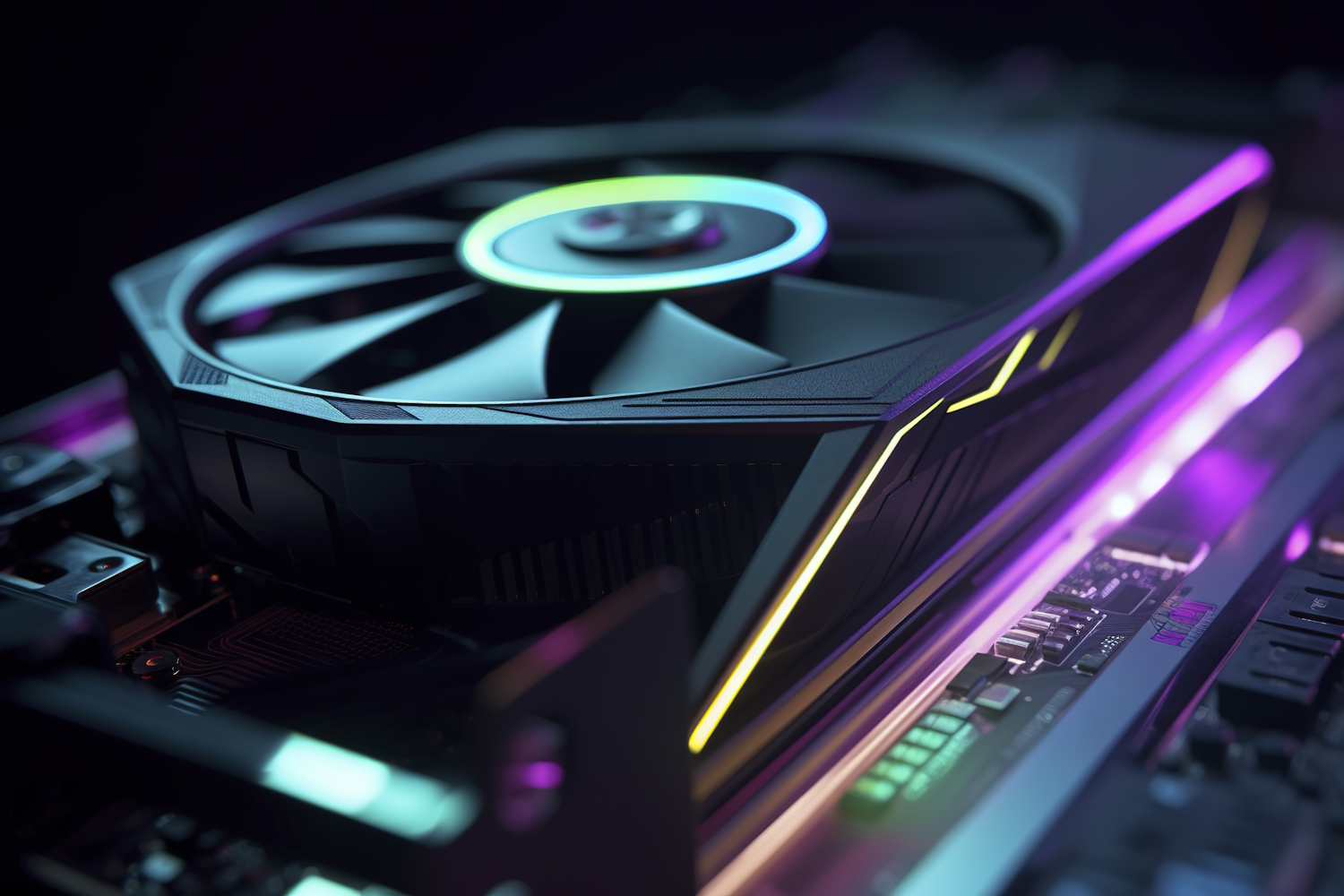Which Graphics Card is Superior? Nvidia vs. AMD
In the ever-evolving world of gaming and graphics, the competition between Nvidia and AMD has reached new heights, captivating the attention of tech enthusiasts and gamers alike. For years, Nvidia’s graphics cards held a comfortable lead over AMD’s offerings. However, the introduction of AMD’s Radeon RX 6000-series lineup has ignited a rivalry like never before. As both manufacturers continuously enhance their graphics architecture and introduce new features, the battle for supremacy in the graphics card market has never been more intense.

A Battle of Performance
When it comes to raw performance, both Nvidia and AMD offer spectacular graphics cards that cater to various gaming preferences. At 1080p gaming, both companies have got you covered. A mid-tier Nvidia RTX 3060 or AMD RX 6600 XT can effortlessly push over 60 frames per second (fps) across a range of games. Take the graphically demanding “Cyberpunk 2077” as an example, where the RTX 3060 delivers 65 fps and the RX 6600 XT reaches 70 fps on the ultra graphics preset.
Scaling up to 1440p gaming on ultra graphics, the competition remains fierce. The Nvidia RTX 3070 and AMD RX 6700 XT face off, with the former edging ahead at 62 fps compared to the latter’s 56 fps. Of course, adjusting graphics presets can yield even higher frame rates.
The 4K and Ray Tracing Frontier
Nvidia has notably taken the lead in 4K and ray tracing performance. In the realm of 4K gaming, Nvidia’s RTX 3080 shines, achieving 40 fps in “Cyberpunk 2077” on ultra graphics settings. Meanwhile, AMD’s RX 6800 XT trails at 37 fps. The disparity widens as ray tracing enters the picture. The Nvidia RTX 3080 reaches an impressive 58 fps with ray tracing enabled at 1080p ultra graphics, while the RX 6800 XT manages 38 fps.
Software Features and Enhancements
Both Nvidia and AMD have introduced innovative software features to enhance the gaming experience. AMD’s FidelityFX Super Resolution (FSR) employs AI algorithms to upscale or sharpen lower-resolution images, resulting in significantly higher in-game frame rates. On the Nvidia front, Deep Learning Super Sampling (DLSS) offers a similar technology with upscaled images that often retain more fidelity than FSR.
In the domain of ray tracing, Nvidia’s DLSS takes the lead, boosting frame rates considerably compared to AMD’s FSR. The advantage is evident in games like “Cyberpunk 2077,” where DLSS pushes the RTX 3080’s frame rate from 58 fps to an impressive 101 fps with ray tracing enabled.
Price and Value Considerations
The battle for supremacy isn’t just about performance; it’s also about value for money. AMD frequently delivers better price-to-performance ratios, making its graphics cards appealing for budget-conscious gamers. For instance, the RX 6700 XT offers competitive performance against the pricier RTX 3070 in games like “Cyberpunk 2077,” while coming in at a more budget-friendly price range.
When it comes to high-end options, AMD graphics cards also tend to be slightly more affordable. The RX 6950 XT, for example, is notably cheaper than its Nvidia counterpart, the RTX 3090 Ti. However, Nvidia’s cards often lead the way in ray tracing optimization, which can be a significant factor for those seeking cutting-edge visual experiences.
Software Support and Compatibility
One crucial consideration when choosing a graphics card is driver support and compatibility. Nvidia’s larger market share often leads to better software optimization for its graphics cards, with software developers frequently prioritising Nvidia cards over AMD cards. This can lead to a smoother experience across a broader range of applications, particularly in areas like professional 3D software.
The Verdict: The Battle Continues
In the showdown between Nvidia and AMD, the verdict isn’t as straightforward as declaring a single winner. Both manufacturers offer compelling options that cater to diverse gaming needs and budgets. While Nvidia often leads the pack in terms of 4K gaming and ray tracing, AMD’s focus on value for money and innovative features like FSR can’t be ignored.
Ultimately, the decision comes down to individual priorities. If you’re a gamer who values raw performance, especially at higher resolutions, Nvidia’s offerings might be more appealing. On the other hand, if you’re looking for a balance between performance and affordability, AMD’s graphics cards might be the better fit.
In the dynamic landscape of graphics technology, both Nvidia and AMD are poised to keep pushing boundaries, ensuring that gamers are the ultimate beneficiaries of this fierce competition. So, whether you’re Team Green or Team Red, the choice between Nvidia and AMD is less about superiority and more about finding the perfect match for your gaming preferences and budget.
As you navigate the exhilarating arena of graphics cards, Techfident stands as your trusted guide through the ever-evolving landscape. Our mission is to equip you with the knowledge and insights you need to make informed decisions in the realm of technology.
From dissecting the nuances of performance metrics to unravelling the intricacies of software features, we’re dedicated to providing you with a comprehensive understanding of the graphics card market.




